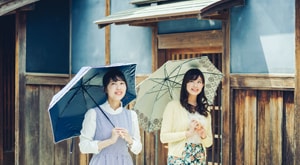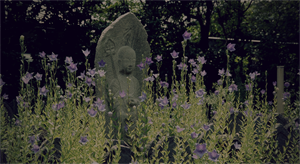Nara's deer are the symbols of the city, and are famous across Japan. Still, there are many things about this celebrity deer that many people don't know.Once you've read this list, you'll be perfectly prepared to make your trip to Nara armed with all the facts about Nara's deer you may need.


The so-called "deer line" refers to the height of 190-195 cm at which the deer typically graze on plants and low branches. Because of this, this part of the forest is typically cleared, and provides a far-reaching line of sight.


The sound of a horn blowing in Nara marks the sound of the season, for this particular horn is associated with the Deer Call, in which the deer are called and herded together with the sound of a horn. This tradition was begun in 1862 with the opening of the deer park, which is said to have been marked with the blowing of a horn. The practice has been passed on since then, and is now an event held several times a year at Tobihino, to the south of the road leading to Kasuga Taisha Shrine. With a sounding of the natural horn, the deer of Nara emerge from within the forest to cluster around the blower. It is said this is a sight than can only be seen in Nara. Come and enjoy the natural peace of this morning scene for yourself.

The grand tradition of the antler-cutting ceremony is a highlight of the ancient city's events. It was begun in the Edo Period (1603-1868) for safety reasons, and in an effort to protect the trees of Nara Park. A buck's antlers are an important symbol for the animal, and while it is a shame to remove them, this antler-cutting event is born of tradition, that the people and deer of Nara may better live together peacefully.

Unlike most deer in Japan, Nara's deer live unusually close to humans. Because of this, it is necessary for us to exercise great caution in how we interact with the deer, in order to continue to coexisting peacefully with the deer of Nara Park. Please keep the following in mind as you make your visit to Nara.
Please exercise great caution when driving in the vicinity of Nara Park, as the deer are known to jump out suddenly.
The deer cannot digest human food: please do not give it to them. Please be especially careful not to leaving behind plastic bags or other trash, as they may endanger the lives of deer upon accidental ingestion. To prevent this, trash cans are located throughout Nara Park. Please dispose of your trash properly in the bins, or carry it home with you.
For more information about Nara's deerFoundation for the Protection of Deer in Nara

Stroll Around Naramachi (Town of Nara)
Starting as a town of shrines and temples, “Naramachi” prospered as a town of commerce for a long time. You can fully enjoy its nostalgic townscape, where a lot of old merchant houses till remain. Walk around narrow alleys in the town, and then you will find your favorite spots.
See More
The Four Seasons in Nara
Nara is a city steeped in centuries of tradition. Its many shrines and temples are also excellent locations to take in the riotous blooms brought with each changing season.
See More